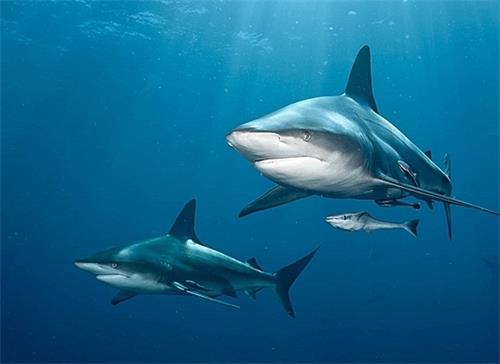
Sharks have long fascinated biologists due to their unique and complex reproductive methods. Nevertheless, a remarkable occurrence in 2001 at the Henry Doorly Zoo situated in Nebraska, United States, ignited significant curiosity within the scientific realm. In that particular year, a bonnethead shark housed in the zoo's aquarium gave rise to a newborn shark, which caught the attention of many.What puzzled scientists was that the tank contained only three female sharks, all of which had been living there for three years—without any male sharks present. So, how did this female shark become pregnant and give birth without mating?
This question immediately triggered heated discussions among scientists. Traditional biological theories suggest that female animals typically require sperm from males for fertilization, which then leads to pregnancy and birth. However, this case defied that fundamental understanding. Some scientists hypothesized that female sharks might have the ability to store sperm from previous encounters and use it for fertilization later. While plausible, this theory could not fully explain the phenomenon. Others speculated that sharks might be capable of an extremely rare reproductive method—asexual reproduction.
Asexual reproduction is a process that does not rely on male sperm and is commonly found in simpler organisms such as bacteria, certain insects, and reptiles. While cases of asexual reproduction in animals had been documented before, it was not until 2007 that scientists confirmed this phenomenon in sharks—one of the ocean’s most complex predators.
In 2007, through precise DNA testing, researchers made a groundbreaking discovery: the baby shark had no father. Its genetic material came entirely from its mother, with no male DNA present. This confirmed that the shark was born through a type of asexual reproduction known as parthenogenesis, where an embryo develops from an unfertilized egg.
This discovery provided a new perspective on shark reproduction. While asexual reproduction is known to occur in certain animal groups, it is extremely rare among complex marine predators like sharks. Scientists believe this could be an adaptive response—when male sharks are scarce or absent, asexual reproduction may allow the species to survive and continue.
In fact, this was not the first recorded case of shark asexual reproduction. In 2008, researchers at the Virginia Aquarium & Marine Science Center confirmed another instance involving a different shark species. This time, the subject was a 5-foot-long, 94-pound Atlantic blacktip shark. Further DNA testing showed that the baby shark carried no genetic material from a male, proving it was also born through asexual reproduction.
These discoveries have drawn increasing attention from biologists, challenging conventional understanding of shark reproduction and providing new insights into nature’s adaptive mechanisms. Asexual reproduction may serve as a crucial survival strategy for certain species under specific environmental conditions—particularly when males are scarce or environmental pressures are high.
In summary, the mystery of shark asexual reproduction not only confirms the existence of this rare phenomenon but also compels us to rethink the diversity and complexity of animal reproduction. From bonnethead sharks to Atlantic blacktip sharks, these remarkable findings have opened new avenues for scientific research and deepened our understanding of the natural world—while leaving us with even more intriguing mysteries to explore.

Heathcliff,Catherine
From Orphan to Avenger: The Spiritual Entanglement of Heathcliff and Catherine
In a desolate valley, surrounded by wind and snow, stood a solitary estate—Wuthering Heights. The master of the house, Mr. Earnshaw, brought home a homeless orphan and named him Heathcliff.

Shah Jahan,Mumtaz Mahal
A Tomb, A Legend: Shah Jahan and Empress Mumtaz Mahal’s Eternal Vow
India's long and rich history is filled with legendary tales, but one of the most touching love stories is that of Emperor Shah Jahan and his beloved wife, Mumtaz Mahal.

Valentine,the Blind Maiden
The Origin of Valentine's Day: Valentine and the Blind Maiden’s Heartfelt Farewell
Every year on February 14th, the Western world celebrates a special occasion—Valentine’s Day. On this day, couples exchange gifts, express their love, and give flowers, chocolates, and greeting cards, filling the world with an air of romance.


